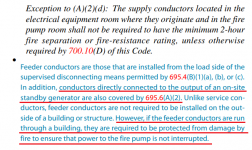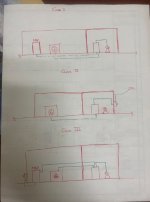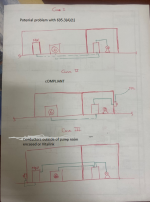medinajuli
Member
- Location
- Florida
- Occupation
- Engineer
Good morning, I am in the process of designing the wiring to a fire pump room in a condominium, my inspector specifies that I must have conduit (EMT, IMC, RMC) from outside to the fire pump control panel (FPCP) resistant to 2 hours inside the fire pump room. Is this possible? What does UL say about it? Thanks for your time.




